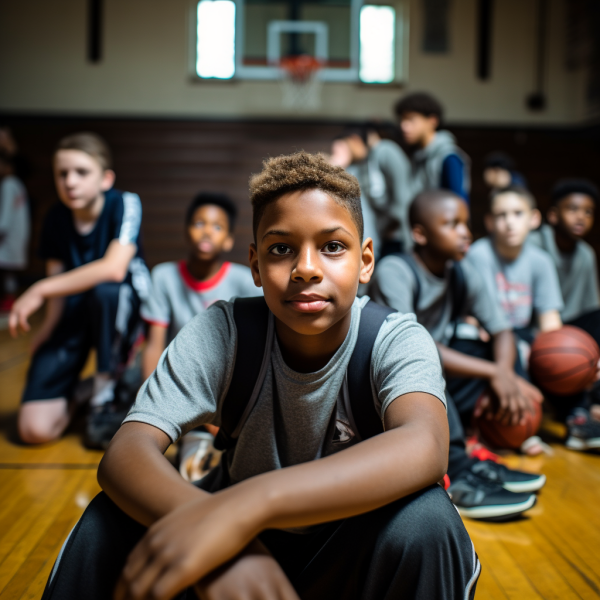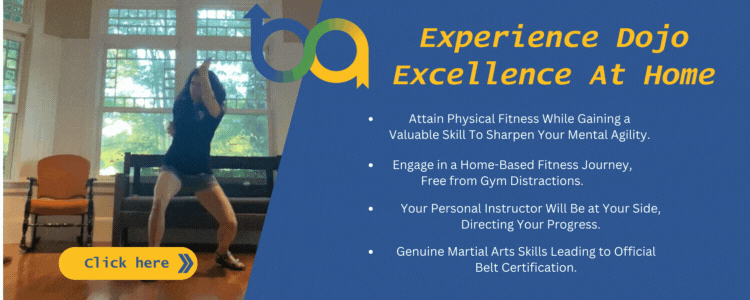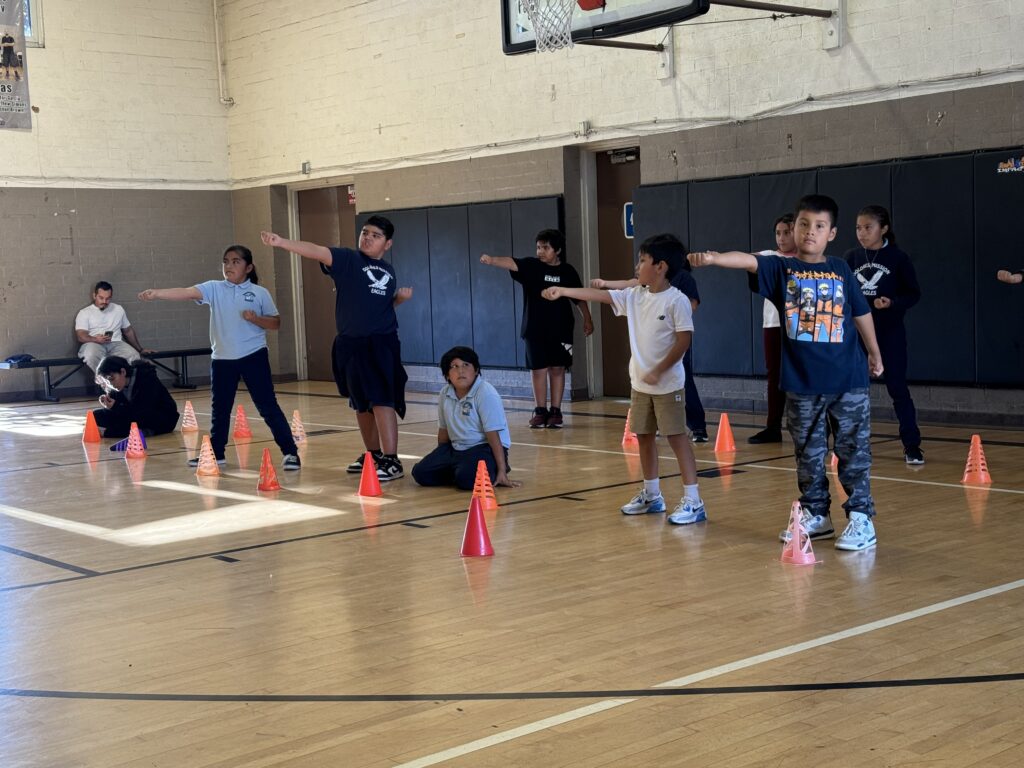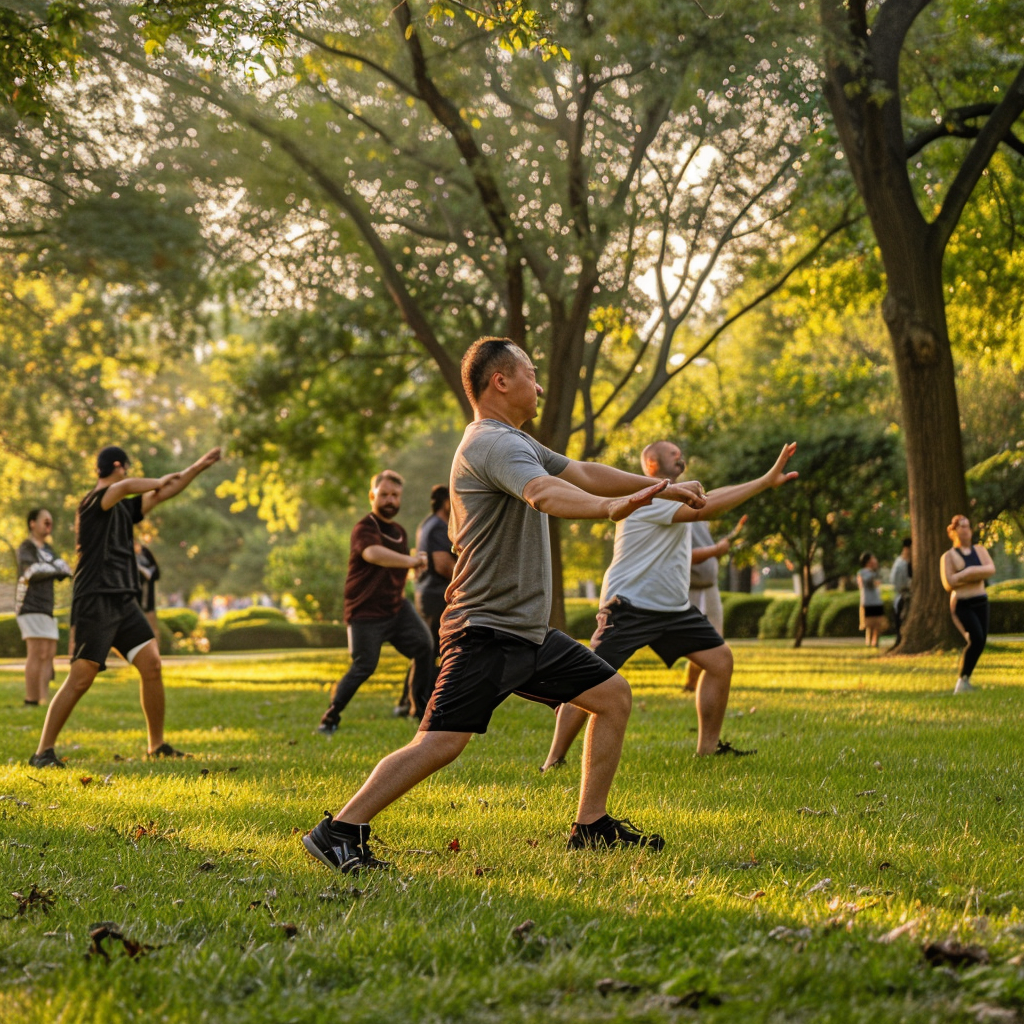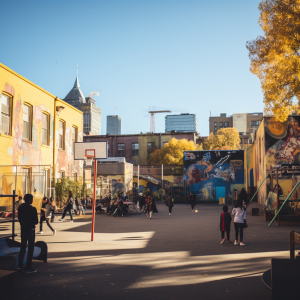 In the rhythmic pulse of our nation’s schools, there exists a silent cadence—a beat of disparity that reverberates through gymnasiums, fields, and playgrounds.
In the rhythmic pulse of our nation’s schools, there exists a silent cadence—a beat of disparity that reverberates through gymnasiums, fields, and playgrounds.
The varying requirements of physical education and the glaring drought of resources and financial assistance available in traditional schools across the country are subjects that require our immediate attention.
One would assume that this rhythm of physical education beats uniformly across the nation. Unfortunately, this couldn’t be further from the truth. In the complex world of U.S. schools, you’ll find a varied and often disjointed approach to physical education that mirrors the differing landscapes of each state.
From the bustling city streets to the quiet rural towns, the requirements, standards, and resources allocated to physical education programs are as diverse as the students they aim to shape…many of whom are in desperate need for physical activity to combat childhood obesity and sedentary behaviors.
The discrepancies don’t end at the state line; they infiltrate the very core of our education system. It is a system shaped not only by academic objectives but also by the chains of budgetary constraints, shifting interests amongst legislation and administration, and a patchwork of state requirements.
It’s important to uncover the stark truths that challenge the implementation of effective physical education programs and explore a multi-purpose option that shines through as a comprehensive solution: online martial arts. They are an innovative and accessible alternative that has the power to fill the voids left by conventional physical education curriculum.
Childhood Obesity and the Connection to Physical Education
It is no secret that the US experiences an inordinate number of individuals who suffer from obesity: in fact, according to the CDC (2023), 19.7% of all children and adolescents aged 2-19 years in 2017-2020 were considered obese (14.7 million children).
In addition, over three-quarters of children and adolescents in the U.S. don’t meet the guidelines of recommended daily physical activity — at least 60 minutes every day of the week (Schoenherr, 2021).
Let’s also not forget that nearly half of children and adolescents exceed two hours per day of sedentary behavior. “The gender disparity is also prominent — 28% of boys meet the guidelines-recommended level of physical activity, whereas only 20% of girls do” (Schoenherr, 2021).
While physical education programs already exist in schools across the country and many administrators and legislators agree that it is a priority, the unfortunate truth to it is that many programs are cut in large numbers due to financial constraints/re-allocation of funds to academic programs. With childhood obesity rates skyrocketing and sedentary behavior increasing, implementing physical education at the school level makes the most sense.
“From a public health perspective, the education system seems like the best way to implement PE on a large scale…compulsory education gives us a valuable framework for curriculum structure and standardization, with the same basic physical education foundation for every student” (Pothamsetty, 2019).
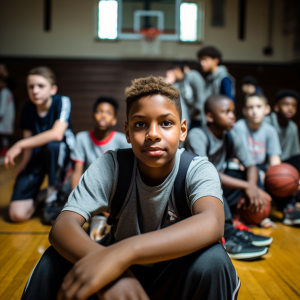 Despite the promising attitudes of administrators and legislators to make physical education a priority, the fact is that state laws mandating P.E. participation have seen a sharp decline by school grade level — only 15%, 9% and 6% of students in elementary, middle and high schools in the U.S., respectively, are required to take P.E. classes on three or more days a week during the entire academic year (Schoenherr, 2021).
Despite the promising attitudes of administrators and legislators to make physical education a priority, the fact is that state laws mandating P.E. participation have seen a sharp decline by school grade level — only 15%, 9% and 6% of students in elementary, middle and high schools in the U.S., respectively, are required to take P.E. classes on three or more days a week during the entire academic year (Schoenherr, 2021).
Unfortunately, it isn’t as simple as changing the priority of physical education on the radar. Many schools located within wealthier neighborhoods receive funds, equipment, etc. from parents and private donors while those located in lower income areas struggle to offer equitable programs (Pothamsetty, 2019).
The median funding in the U.S. for physical education programs is just $764 per school, per year (Schoenherr, 2021). This severe underfunding and indiscriminate allocation of resources has created this arbitrary sea of requirements, and it stretches across the country, missing so many of the intended beneficiaries.
Perhaps what is missing the most is the research – while disparities are evident amongst schools across the nation, little research exists that proves the importance of universal standard physical education programs. Unfortunately, to entice administration both locally and federally to implement standardized requirements that are universal across the country, more research is needed.
”Although all physical education programs should follow the same standards, research suggests there are access gaps from school to school… PE isn’t as well-researched as other fields in public health, more school-specific data is needed to account for the differential access gap” (Pothamsetty, 2019).
Bridging the Gap through Technology
With the varying requirements and gaps in physical education coverage across the country, it is imperative to find a comprehensive program that can fill in these gaps.
While we can agree that physical activity in school is a priority, there is some evidence that the method is perhaps the most important focus point.
Mandating things like fitness tests could raise concerns and reinforce peer pressure and a competitive atmosphere. Consequently, some students may choose to skip any physical education classes to avoid assessment, according to Schoenherr (2021). Fear of embarrassment and anxiety about performance are cited as some of the top reasons why students avoid physical education in school.
So, what is the best way to implement a standardized physical education curriculum that negates these troublesome characteristics of traditional P.E. while still accomplishing the goals of fitness?
Martial arts have long been a comprehensive solution, not only to fitness but also for mental and emotional health.
“Practicing martial arts is viewed as a form of therapy to just about everyone who does it. A person’s focus completely shifts to what is happening (when they train). They learn early that there is an infinite amount of knowledge to pursue, which means they never stop improving and adapting” (Miller, 2023).
There have also been multiple studies indicating that martial arts increase and prolong cognitive functions as well as promote stress relief and mental discipline (self-control, resilience, etc.) (Miller, 2023).
With physical, mental, and emotional benefits lying in wait within the field of martial arts, it is not only a viable option to fill these physical education gaps but is preferred – and our flexible, convenient online platform takes the lead.
To meet the challenges of sedentary lifestyles and the need to develop strong physical education habits, our inclusive online fitness curriculum:
- Engages children by gamifying fitness.
- Eliminates anxiety.
- Enables students to reach fitness goals as proficiency levels advance and the challenges proportionately intensify.
- Promotes skill development through self-paced curriculum that is designed to accommodate any learner.
The platform functions in a group setting, like a school gym class, as well as at home, individually. This multi-purpose format allows students to participate together if they wish – and in privacy.
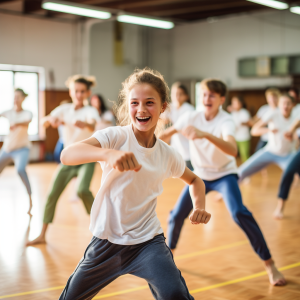
Students create their own account and work at their own individual pace, where they feel most comfortable, eliminating the anxiety and risk of embarrassment that causes so many to skip physical education in the first place.
In addition, our platform utilizes video modeling which has been proven to heighten the learning experience.
Check out our blog on how video modeling enriches learning:
https://btateam.org/from-pixels-to-power-how-technology-enhances-your-martial-arts-journey/
Students can learn how to self-assess through viewing their video submissions as well as continuously improve what they have already learned. Video modeling within education provides clarity and a comprehensive experience for all learning styles.
Our online fitness and martial arts program serve as a flexible learning platform, catering to students of various abilities, fostering robust physical fitness habits. Additionally, participants gain insight into essential mental and emotional character traits such as discipline, self-control, self-determination, and resilience, among others. Integrating our adaptable program into schools not only addresses the shortcomings of traditional P.E. requirements but also provides children the opportunity to utilize it at home, further enhancing their skills.
For those concerned about the existing P.E. requirements and the disparity amongst the states, it’s also important to note the following:
Alaska, Arizona, and Colorado are the only states that do not have physical education requirements for students at any grade level. 31 states allow students to fulfill physical education credits with other activities, such as participation in school sports or JROTC (Study.com, 2023).
Inquire at the local level how your student can utilize our flexible online learning model to fulfill their P.E. credits and benefit from everything martial arts have to offer!
In the intricate web of challenges surrounding physical education in our nation’s schools, it becomes evident that the health and fitness of our youth are not experiencing a standardized approach. From one state to another, the landscape of physical education is as diverse as the student body it seeks to benefit.
As budget constraints tighten their grip and legislative disparities persist, the need for innovative solutions becomes increasingly urgent. It is within this framework that we’ve explored the potential of our online martial arts platform as a viable substitute for traditional physical education. Our low cost/sponsored program opens doors that budgetary limitations might otherwise close, providing a dynamic environment for students to engage with fitness education at their own pace and within their unique circumstances.
However, the discussion doesn’t end here. As we embrace the possibilities of online martial arts, it is crucial to continue advocating for comprehensive, inclusive, and well-funded physical education programs in our schools. The pursuit of fitness should not be a privilege reserved for those with access to certain resources but a fundamental right for every student.
The state-by-state struggle for consistent physical education in our schools calls for a collective effort. Let us champion innovative solutions, support equitable funding, and emphasize the importance of fostering a culture of health and well-being in our nation’s schools.
References
CDC. (2023). Childhood Obesity Facts. Retrieved from https://www.cdc.gov/obesity/data/childhood.html
Miller, D. (2023). GymDesk. 12 Essential Benefits of Learning Martial Arts. Retrieved from https://gymdesk.com/blog/essential-benefits-learning-martial-arts/
Pothamsetty, N. (2019). The Public Health Advocate. What’s Wrong with Physical Education? Retrieved from https://pha.berkeley.edu/2019/12/01/whats-wrong-with-physical-education/
Schoenherr, N. (2021). Washington University in St Louis. State Laws can Bolster Physical Education Among Children, study finds. Retrieved from https://source.wustl.edu/2021/03/state-laws-can-bolster-physical-education-among-children-study-finds/
